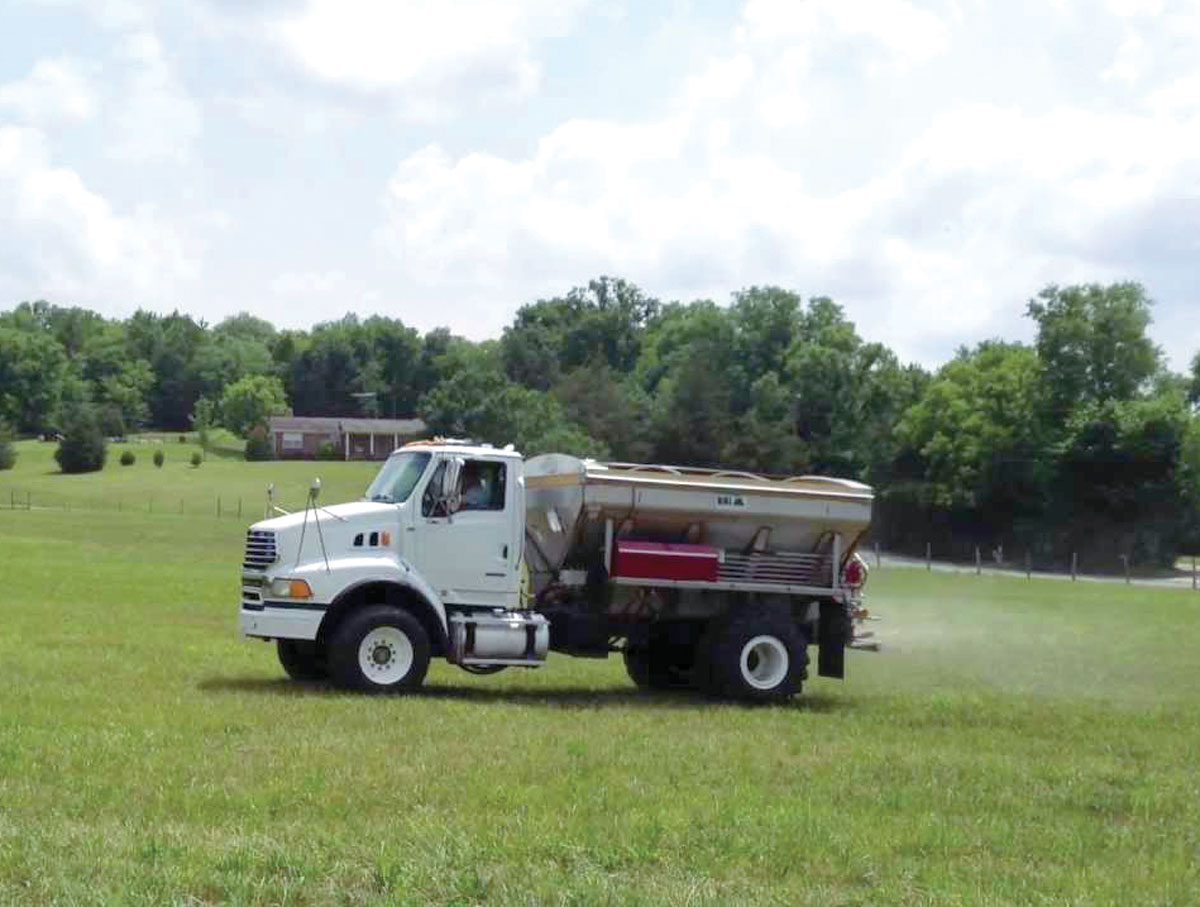 Fertilizing stockpiled pastures can aid in production
Fertilizing stockpiled pastures can aid in production
There is just enough of a nip in the air to remind agriculture producers in the Ozarks that fall has arrived. Now is the time to fertilize pastures for optimal fall forage production.
When someone talks about applying fall fertilizer, nitrogen is usually the first thing to come to mind.
“The optimum application window for fall nitrogen in fescue pastures starts around Aug. 1, and response to fall-applied nitrogen decreases incrementally after Sept. 1. In Southwest Missouri, mid to late August is optimum,” Jill Scheidt, agronomy specialist with the University of Missouri Extension, said. “The average yield response to fall-applied nitrogen typically is less than response to spring-applied nitrogen. Depending on rainfall the fall nitrogen response can be quite variable. A favorable distribution of precipitation can lead to a large yield response.”
She went on to note that research from Missouri and other states shows a positive response to rates of nitrogen over 100 pounds/acre, but the amount of response decreases at higher rates. Higher rates are also more likely to reduce legumes in mixed fescue-legume pasture. A rate between 50 and 100 pounds of nitrogen per acre is justified in most pastures. Producers should choose the lower rate on pastures looking to maintain a high legume component.
Lime is also an important soil component, Scheidt explained.
“The first thing producers should always look for on a soil test is if lime is needed. It usually takes lime six months to break down and change soil pH, so if pH needs to be corrected, lime should be applied as soon as possible. Lime is the most important soil amendment because a proper soil pH is needed for other nutrients to become available for uptake by the plant,” she said.
Fall is a good time to test for this so that if your soil does require applications of lime, it can be applied and allowed to break down into the soil over the winter.
Fertilizing stockpiled pastures can help aid producers in having grass to help carry them through the winter, according to John Jennings, professor of forages at the University of Arkansas.
“A good option is to fertilize fescue pastures in late August to the first week of September for stockpiled pasture. Stockpiled fescue can produce significant growth during fall if conditions improve and can be grazed all winter depending on acreage,” he said.
Tim Schnakenberg, MU Extension Agronomy Specialist, recommends 40 to 60 pounds of nitrogen per acre on stockpiled fescue. Following fertilization and the recommended growing period, a rotational grazing program needs to be implemented to maximize forages throughout the fall and into the winter.





